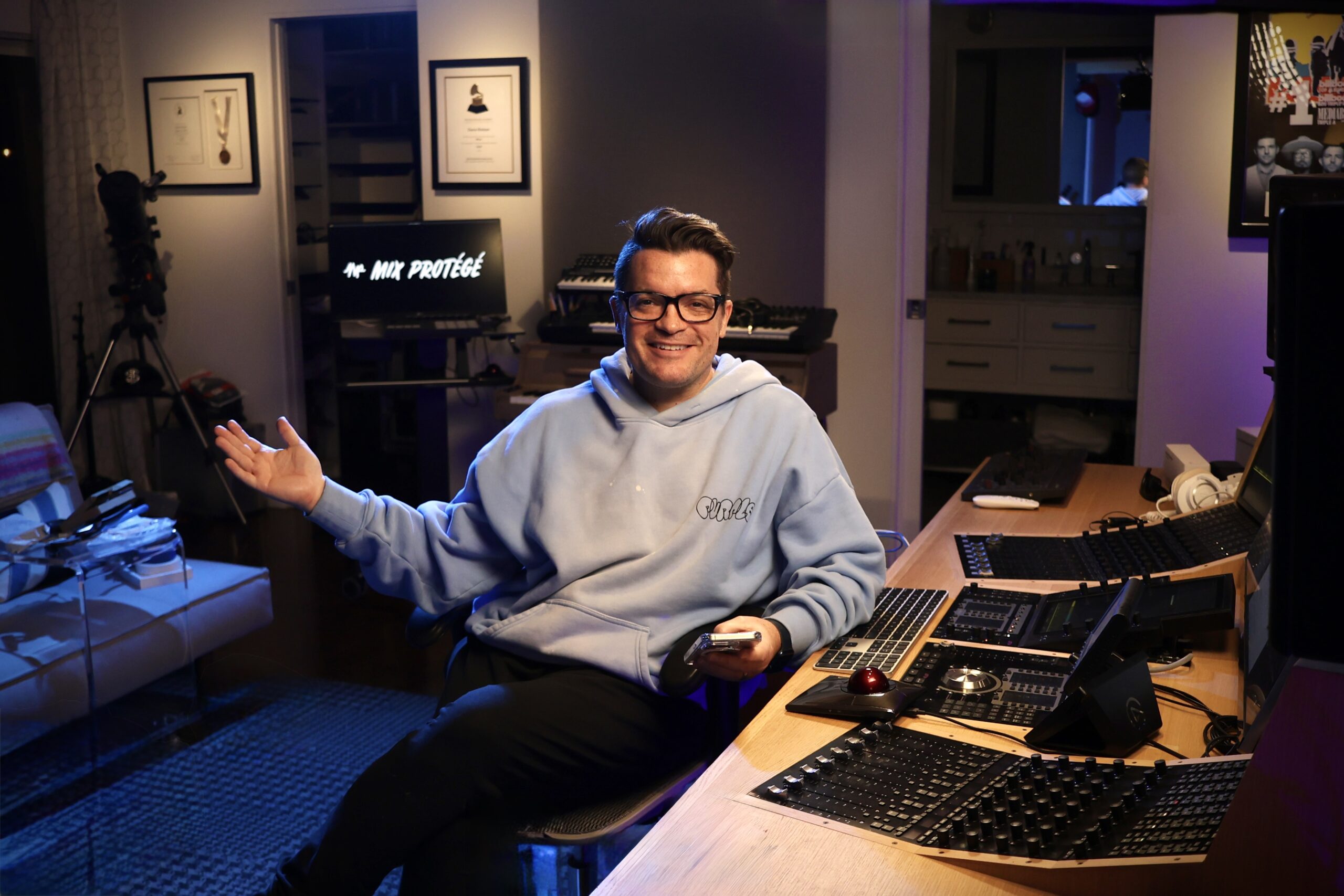-
Hey Drew!
Such a great question, AND a great challenge. Upright bass is a beast that can be difficult to wrangle, especially when you want sub-y low-end out of it.
For me, this process begins with mic placement. (I know … “yawn.” And prob also “too late,” as you’re working with already-recorded tracks, but bear with me. Perhaps these ideas will help your next recording. Plus, I’ll include some mixing tips that’ll help pre-recorded bass as well.
My Best Microphone? My Ear.
I always start by listening to the player in the room. This is my method for recording any instrument. I pretend my ear is the microphone (or ears, plural, if I’m placing a stereo mic). I move my head around like a weirdo while the musician plays, and I find the spots that sound the best to me, and I put the mics there. Works every time.
My Go-To Two Mic Upright Bass Technique
For an upright bass I’m usually looking for a two-mic setup: one large-diaphragm condenser near the f-hole to pick up the deepest, richest, sub-iest sound my ears can locate; and one LDC on the neck facing down(ish) around where the neck meets the body of the instrument to pick up the mid-range definition, which helps define the bass “note” especially on small speakers. As long as those two mics are in-phase with each other I can adjust them during mixing to suit each individual song. A slow ballad might favor the F-hole low-end bloom, whereas an uptempo song might favor the neck mic so that the notes pop out nice and clear, and the tempo doesn’t get weighed down with sluggish low-end.
Bass Bussin’
Regardless the tempo, both of these mics (and sometimes a D.I., too, if available) will get bussed to a mono Aux Input, where I’ll apply any additional EQ and compression. EQ’ing and compressing the combined signal helps avoid EQ phase weirdness btwn mic’s, and helps solidify the instrument’s envelope (attack, decay, sustain, release). As an added bonus it also sums things down to one fader for easier balancing and automation.
Parallel Extremes When Needed
From there – if needed – I might add a couple “parallel” processes by sending the Bass buss (via pre-fade send) to an aggressive compressor Aux Input, and/or an amp sim Aux Input, and/or a subharmonic effect Aux Input (this is similar to what @detective recommended in his helpful post – thanks, Paul!). Sending the bass buss to multiple returns using a “pre-fade” aux send, allows me to turn the original dry Bass buss fader all the way down while I dial in my aggressive parallel effects returns. I always go “aggressive” with parallel FX ’cause otherwise what’s the point? The beauty of parallel is I can add these faders to the dry Bass buss in small increments. Kinda like adding a few dashes of ghost pepper hot sauce to huge pot of chili. A little goes a long way, and its potency is what makes it so useful in a large batch– err, I mean so useful in a dense audio mix.
Hope these tips help, Drew! Feel free to share a sample of your current mix as well as a sample of one of your fav references, and maybe we can get some more ideas flying. Good luck! 🎚️⚡️

